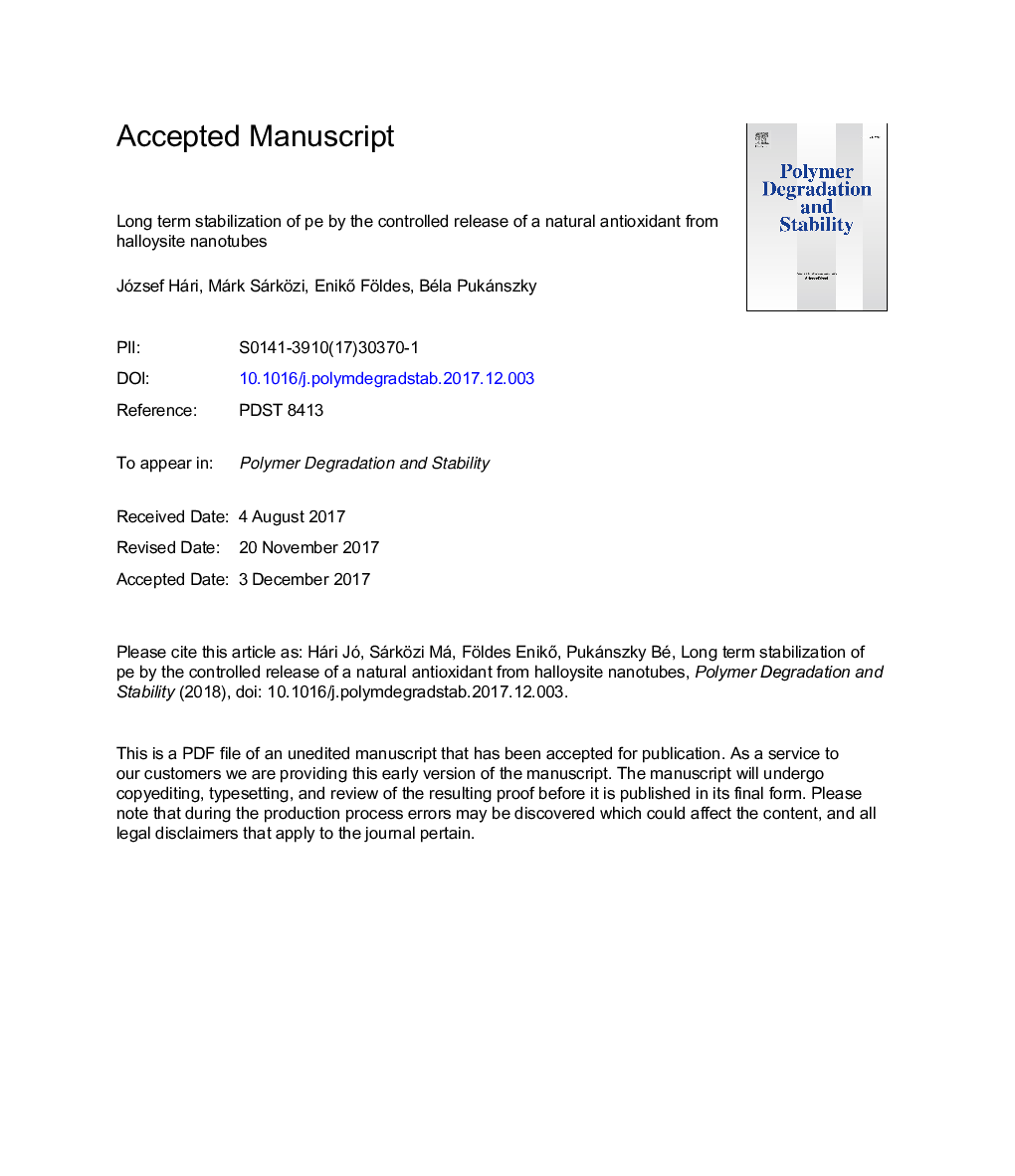| Article ID | Journal | Published Year | Pages | File Type |
|---|---|---|---|---|
| 7824215 | Polymer Degradation and Stability | 2018 | 32 Pages |
Abstract
A natural antioxidant, quercetin, was adsorbed on the surface of halloysite nanotubes in various amounts to prepare a controlled release device. The combined additive was added to polyethylene providing antioxidant levels of 250, 500, 750 and 1000Â ppm. All polymer samples contained 1000Â ppm Sandostab PEPQ phosphonite secondary antioxidant as well. The stabilizing efficiency of quercetin was determined in processing experiments and by accelerated ageing. Quercetin proved to be a very efficient stabilizer of polyethylene. The use of the halloysite nanotube support resulted in more homogeneous dispersion and facilitated the dissolution of the compound in the polymer. Because of the high energy of halloysite surface, the stabilizer adhered to it very strongly and did not dissolve in polyethylene below a critical concentration. The melt stabilization efficiency of quercetin did not decrease in the presence of the halloysite support. The efficiency of long term stabilization decreased somewhat, but halloysite nanotubes pretreated with the stabilizer possessed a controlled release function, ageing was slower in their presence than with separately dispersed components or in the absence of the halloysite.
Related Topics
Physical Sciences and Engineering
Chemistry
Organic Chemistry
Authors
József Hári, Márk Sárközi, EnikÅ Földes, Béla Pukánszky,
